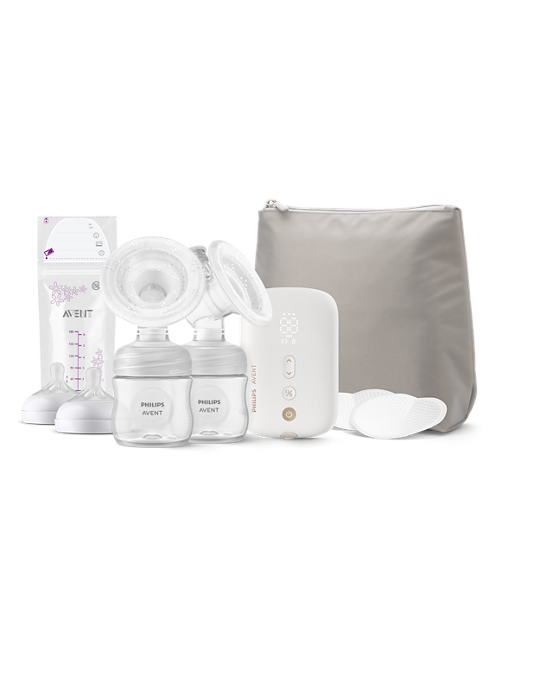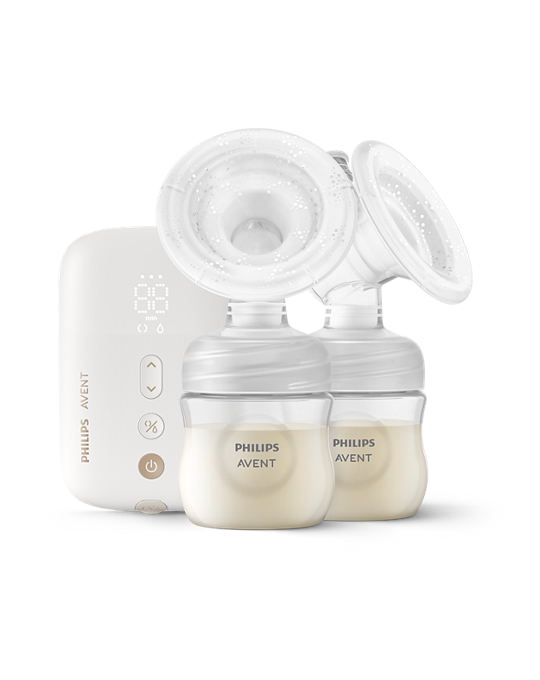Disclaimers
¹ Based on an online satisfaction survey conducted globally with 10,109 users of mother & child care brands and products in 2023.
² Based on milk flow initiation time (time to Milk Ejection Reflex — MER) results from clinical trial with 20 participants (Netherlands, 2019) compared to time to MER results for other Philips predecessor pump technology from Feasibility study with 9 participants (Netherlands, 2018).
³ Tested with 100 midwives in Germany, 05/2020 www.hebammen-testen.de.
⁴ up to 30 mms. Based on: (1)Mangel et al. Breastfeeding difficulties, breastfeeding duration, maternal body mass index, and breast anatomy: are they related?. Breastfeeding Medicine, 26 April 2019, (109 participants, Israel); (2)Ziemer et al. Skin changes and pain in the nipple during the 1st week of lactation. Journal of Obstetric, Gynecologic & Neonatal Nursing, May 1993, (20 participants (Caucasian), USA); (3)Ramsay et al. Anatomy of the lactating human breast redefined with ultrasound imaging, 2005, (28 participants, Australia).
* Based on milk flow initiation time (time to Milk Ejection Reflex - MER) results from clinical trial with 20 participants (Netherlands, 2019) compared to time to MER results for other Philips predecessor pump technology from Feasibility study with 9 participants (Netherlands, 2018).
** For 1K-SE: 70% of the participants experienced MER within 60 seconds. Based on milk flow initiation time (time to Milk Ejection Reflex - MER) results from clinical trial with 20 participants (Netherlands, 2019) compared to time to MER results for other Philips predecessor pump technology from Feasibility study with 9 participants (Netherlands, 2018).
*** Based on product clinical trial results with 20 participants (Netherlands, 2019), average score for single and double electric breast pump; 95% of participants agree that our breast pumps are effective (single electric); 100% of participants agree that our breast pumps are effective (double electric).
**** Based on: (1) Mangel et al. Breastfeeding difficulties, breastfeeding duration, maternal body mass index and breast anatomy: are they related? Breastfeeding Medicine, 26 April 2019, (109 participants, Israel); (2) Ziemer et al. Skin changes and pain in the nipple during the 1st week of lactation. Journal of Obstetric, Gynecologic & Neonatal Nursing, May 1993, (20 participants (Caucasian), USA); (3) Ramsay et al. Anatomy of the lactating human breast redefined with ultrasound imaging, 2005, (28 participants, Australia).
***** Only associated with the bottle, and other parts that come into contact with breast milk. Following EU regulation, 10/2011.



